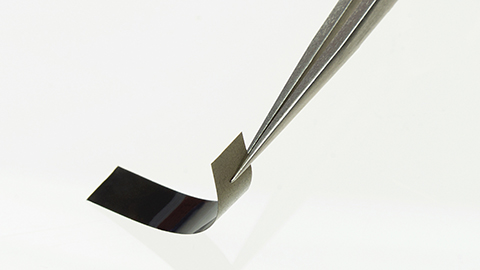A paper that converts waste heat into electricity

30/01/2019
Thermoelectric materials, capable of transforming heat into electricity, are very promising when converting residual heat into electrical energy, since they allow us to utilize hardly usable or almost lost thermal energy in an efficient way. Researchers at the Institute of Materials Science of Barcelona (ICMAB-CSIC) have created a new thermoelectric material: a paper capable of converting waste heat into electricity. These devices could be used to generate electricity from residual heat to feed sensors in the field of the Internet of Things, Agriculture 4.0 or Industry 4.0. The study has been published in the Energy & Environmental Science journal.
“This device is composed of cellulose, produced in situ in the laboratory by bacteria, with small amounts of a conductor nanomaterial, carbon nanotubes, using a sustainable and environmentally friendly strategy” explains Mariano Campoy-Quiles, researcher at the ICMAB.
"In the near future, they could be used as wearable devices, in medical or sports applications, for example. And if the efficiency of the device was even more optimized, this material could lead to intelligent thermal insulators or to hybrid photovoltaicthermoelectric power generation systems" predicts Campoy-Quiles.
In addition "due to the high flexibility of the cellulose and to the scalability of the process, these devices could be used in applications where the residual heat source has unusual forms or extensive areas, as they could be completely covered with this material" indicates Anna Roig, researcher at the ICMAB.
Farming thermoelectric paper in the lab
"Instead of making a material for energy, we cultivate it" explains Mariano Campoy-Quiles, a researcher of this study. "Bacteria, dispersed in an aqueous culture medium containing sugars and carbon nanotubes, produce the nanocellulose fibers that will end up forming the device, in which the carbon nanotubes are embedded" continues Campoy-Quiles.
"We obtain a mechanically resistant, flexible and deformable material, thanks to the cellulose fibers, and with a high electrical conductivity, thanks to the carbon nanotubes," explains Anna Laromaine, researcher of this study. "The intention is to approach the concept of circular economy, using sustainable materials that are not toxic for the environment, which are used in small amounts, and which can be recycled and reused," explains Roig.